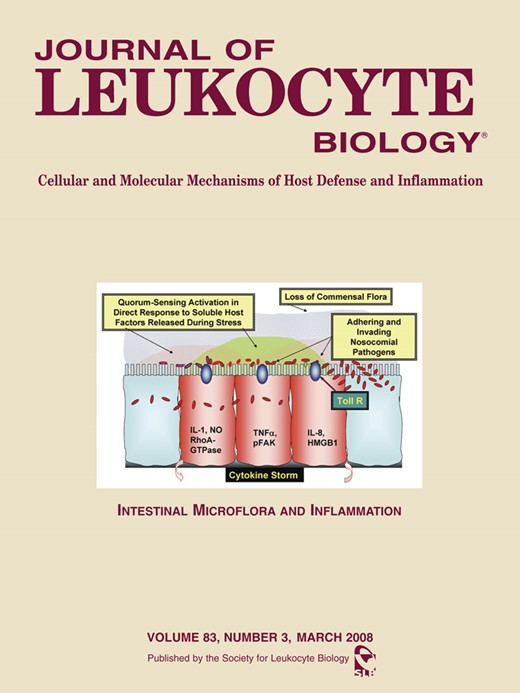-
Views
-
Cite
Cite
Katja Farhat, Sabine Riekenberg, Holger Heine, Jennifer Debarry, Roland Lang, Jörg Mages, Ute Buwitt-Beckmann, Kristina Röschmann, Günther Jung, Karl-Heinz Wiesmüller, Artur J Ulmer, Heterodimerization of TLR2 with TLR1 or TLR6 expands the ligand spectrum but does not lead to differential signaling, Journal of Leukocyte Biology, Volume 83, Issue 3, March 2008, Pages 692–701, https://doi.org/10.1189/jlb.0807586
Close - Share Icon Share
Abstract
TLR are primary triggers of the innate immune system by recognizing various microorganisms through conserved pathogen-associated molecular patterns. TLR2 is the receptor for a functional recognition of bacterial lipopeptides (LP) and is up-regulated during various disorders such as chronic obstructive pulmonary disease and sepsis. This receptor is unique in its ability to form heteromers with TLR1 or TLR6 to mediate intracellular signaling. According to the fatty acid pattern as well as the assembling of the polypeptide tail, LP can signal through TLR2 in a TLR1- or TLR6-dependent manner. There are also di- and triacylated LP, which stimulate TLR1-deficient cells and TLR6-deficient cells. In this study, we investigated whether heterodimerization evolutionarily developed to broaden the ligand spectrum or to induce different immune responses. We analyzed the signal transduction pathways activated through the different TLR2 dimers using the three LP, palmitic acid (Pam)octanoic acid (Oct)2C-(VPGVG)4VPGKG, fibroblast-stimulating LP-1, and Pam2C-SK4. Dominant-negative forms of signaling molecules, immunoblotting of MAPK, as well as microarray analysis indicate that all dimers use the same signaling cascade, leading to an identical pattern of gene activation. We conclude that heterodimerization of TLR2 with TLR1 or TLR6 evolutionarily developed to expand the ligand spectrum to enable the innate immune system to recognize the numerous, different structures of LP present in various pathogens. Thus, although mycoplasma and Gram-positive and Gram-negative bacteria may activate different TLR2 dimers, the development of different signal pathways in response to different LP does not seem to be of vital significance for the innate defense system.





